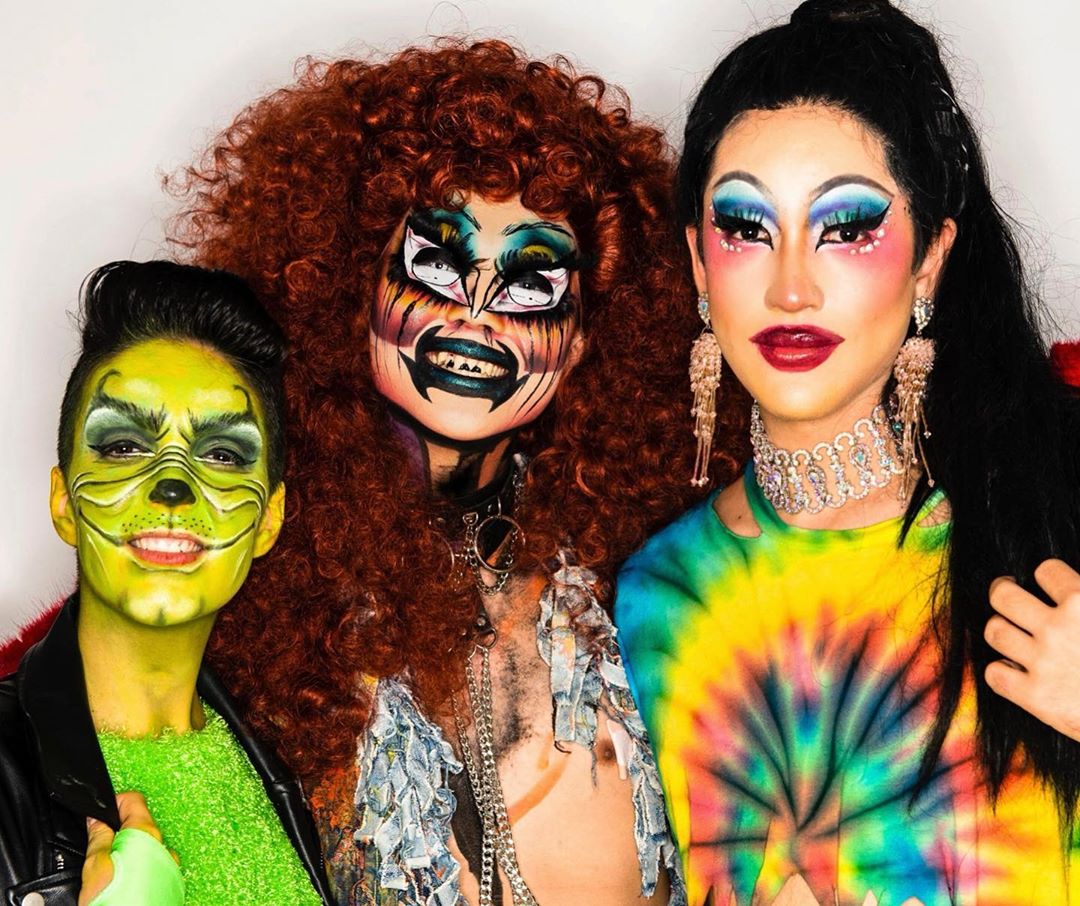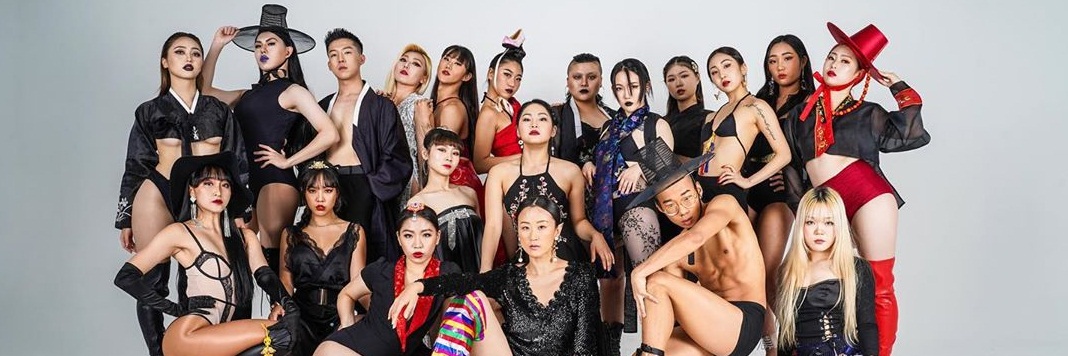Inspired by the art that strengthened the LGBTQ+ community during the 80s, resistance spaces grow in Korea.
During the 1980s, the New York urban scene saw the Ballroom culture grow, true nightclubs that opened doors for black and Latino people from the LGBTQ+ community – especially trans, non-binary and drag queens – to perform and to belong together. The artistic movement, which established the community’s resistance with struggle, glamor, thematic balls and voguing battles, strengthened in the 1980s and, since then, has spread to the margins of society, but only now is taking shape on the other side of the globe, in the country of K-Pop.
For those unfamiliar with the terms or the universe itself, the Ballroom culture has its own characteristics, which directly reflect its origin. Starting with the families formed within this context, the so-called houses. Consisting of LGBTQ+ people ignored by society and often by their own families, the houses are led by people who assume maternal and paternal figures for their members. Mothers and fathers are responsible for welcoming and teaching their children; they usually define the name of the house, which functions as a surname for all its members; and they also lead the family in competitions. The balls, in turn, bring together different houses, competing in different performing and voguing categories – in both cases being evaluated by their costumes, boldness and performance.
“It has been only three to four years since the Korean Ballroom scene was formed,” says UU Milan, mother and founder of the House of Kitsch, the country’s first Kiki House. According to the choreographer, even before the Ballroom culture started to develop in the country, one of its main aspects gained popularity in Korea without any connection with the LGBTQ+ culture: voguing.
This introduction of vogue as a dance isolated from its cultural context ended up impacting directly the formation of its South Korean audience. Currently, this lack of association between vogue and LGBTQ+ culture is reflected in the country’s own Kiki scene, which is mostly formed by women, mainly straight women. As an example of this female predominance, the House of Love is formed by 20 people, 16 of whom are women – the other four fit between drag queens and butch queens*. “It seems that the role of the current era is to do what one wants regardless of gender identity,” argues UU Milan.
*slang used by the community to define gay men who doesn’t fit into extreme masculinity or extreme femininity.
Traditions and events
As in the past the Ball culture has strengthened the non-white american LGBTQ + community, currently in Korea, the logic of inclusion continues to be of great importance. Despite not concentrating the same volume of black and latino people – whether due to geographic restrictions or population levels -, Beautia Love guarantees that there is no racial or sexual discrimination at Korean Balls, and that the well-being of all its visitors is taken in consideration.
This principle of inclusion is just one of the similarities found when a comparison is made between the recent Korean Kiki scene and the veteran scenes from other countries. Members of the House of Love, for example, all live under one roof, maintaining a decades-old tradition, which aimed to welcome LGBTQ+ people in street situation or home endangerment. “We all felt like a loved family, so we moved into a house all together,” explains Ran Love, the mother of House of Love.
In addition to thinking about the youth participation, Crash Landed also targets a specific audience in Korea: foreigners. Pluto explains that this concentration of non-Koreans largely reflects the way the events are promoted and conducted – in English – but it also shows a location influence. Crash Landed Seoul has its base in Yongsan, a district in which an American military base is located and, consequently, concentrates a larger population of foreigners, who end up becoming a more expressive presence in the team’s events.

Crash Landed Seoul team. From left to right: Sapphire Reign, Hoso and Pluto.
Along with Crash Landed Seoul, Kiki houses also conduct the organization of events and, according to Deana Love, it was Ran Love, matriarch of the House of Love, who started the Korean Ball circuit, with the Mangwon Ball in 2017. Since then, the number off balls and their frequency has grown, says My Love: “the three Kiki houses ‘House of Love’, ‘House of Kitsch’ and ‘House of Seas’, and some dancers, usually hold Balls about once a month.”
The meaning of visibility for the scene
Still as a subculture with little visibility not only in Korea, but in closer realities – like the Brazilian one – the Ball culture finds in the media a way to show itself and to become an inspiration. Last year, for example, drag queens that are part of the Korean Kiki scene took part in MVs, such as Wonder Woman, by the legendary Brown Eyed Girls, and also made great appearances on TV shows, as in the performance with AOA during Queendom.
Media representation, however, does not always function as a tool to increase the visibility of a marginalized culture, says drag Hoso, from Crash Landed Seoul. “It’s a tricky situation, because on one hand, queer art and the queer artists are finding more light in the mainstream Korean media, but again it is not explicitly presented as “queer”, which comes back to our point about visibility. In Korea, people often don’t even think about a person being LGBTQ+ as an option. Therefore, the media is able to profit off of queer artists without having to spell out their queerness explicitly,” she explains.
Despite the profit generated by parts that don’t actually commit to LGBTQ+ causes, the presence of the community in traditional media continues to shake the local conservatism. Choreographer UU Milan says that such exposure in traditional media wouldn’t have been possible a few years ago, but it can currently help in the process of social acceptance.
Legacy and young generations
The Ball culture in Korea can be very young, and the LGBTQ+ culture, as a whole, can find problems with visibility, but still, the social impacts can already be felt. “The Korean queer youth of now are much more confident in who they are and what they would like to do,” says Hoso on what UU Milan points out as a reason for a social change that is currently underway in Korea. “The Korean society culture seems to be gradually opening up, as the LGBTQ dancers at the Ballroom scene are active and confident in their appearances,” says the choreographer.
A scenery of confident LGBTQ+ youth and increasing social receptivity offers a perspective of development and growth for the coming years. A future that reserves the consolidation of the Balls scene and the continuous occupation of spaces, until now, not so occupied by the community – be it on TV, in the K-Pop MVs or in the imagination of a conservative society. In the view of UU Milan, this moment can be significant not only for Korea, but for an entire continent: “The Korean Ballroom scene is at a very important moment now and, with it being built, many dancers will work together to create an Asian scene,” she concludes.
Article by Bea| K4US Writing Team
www.k4us.com.br | Do not remove without credits
 Português
Português English
English 한국어
한국어